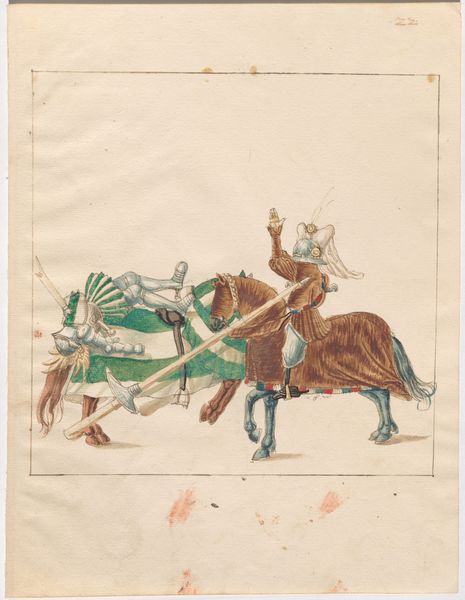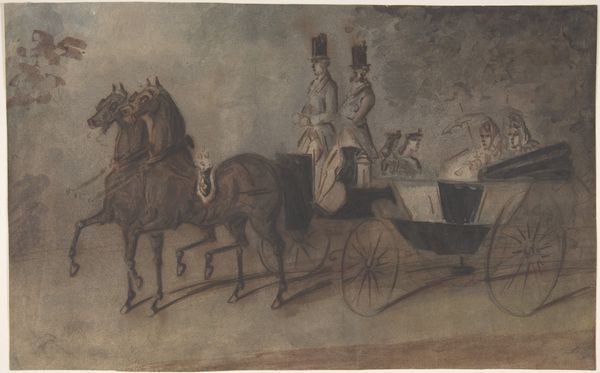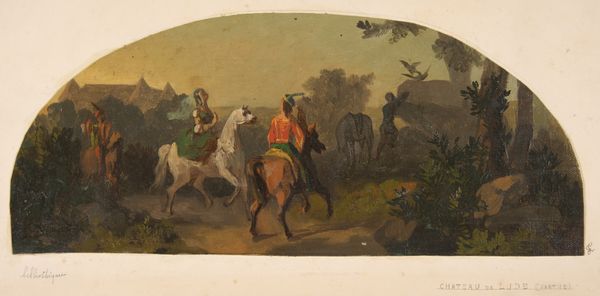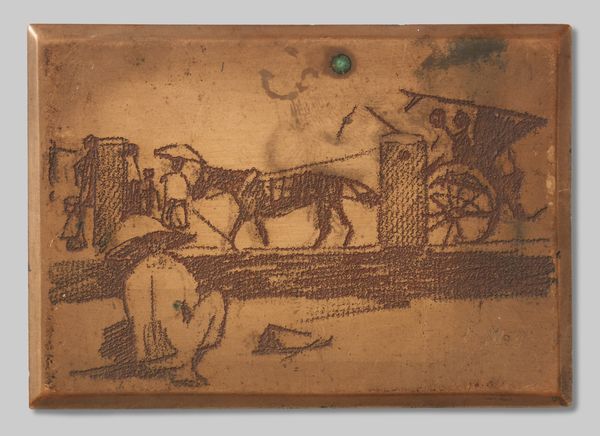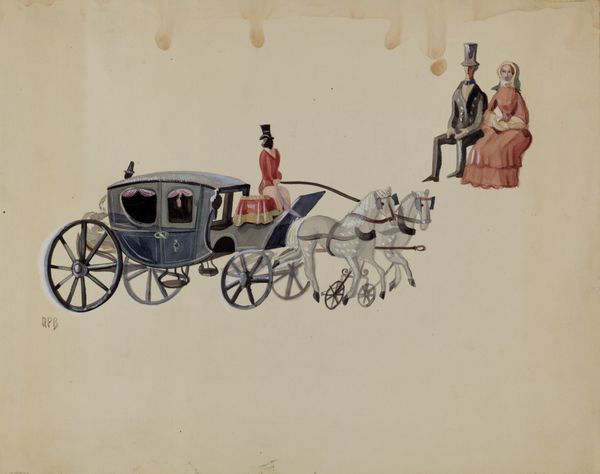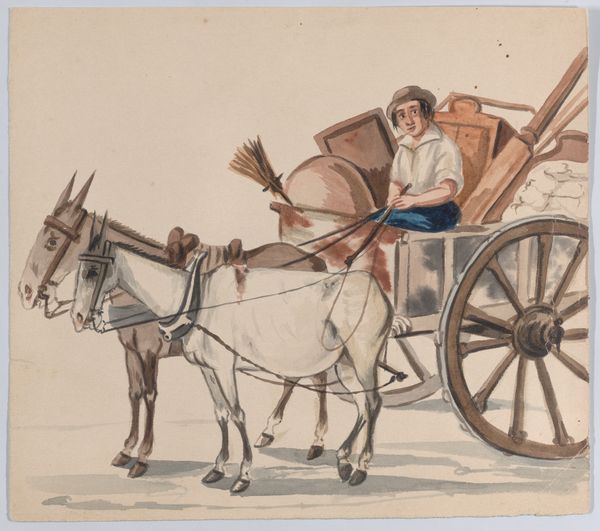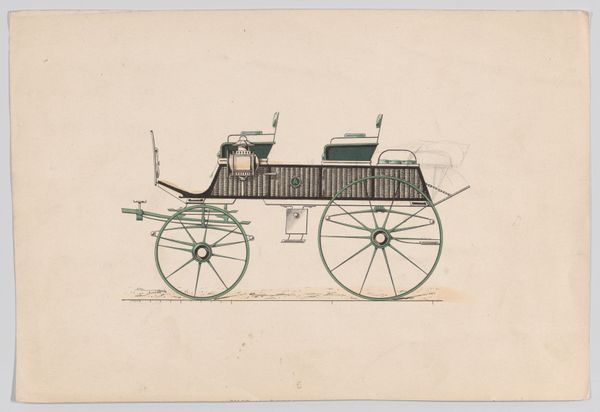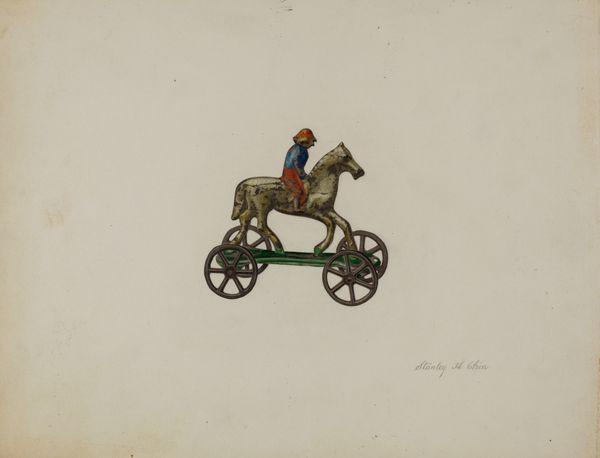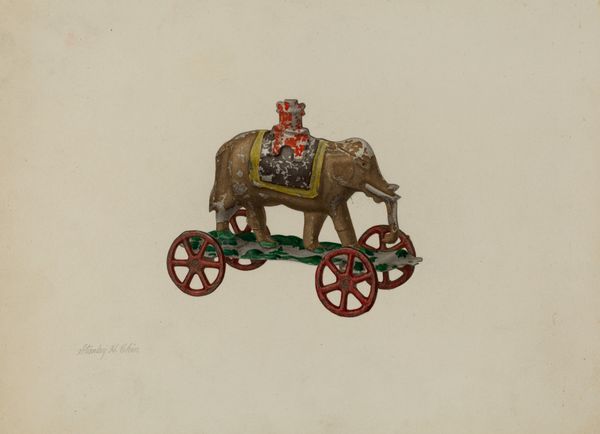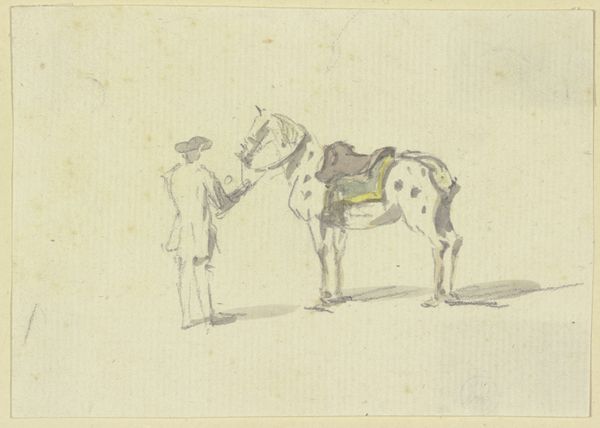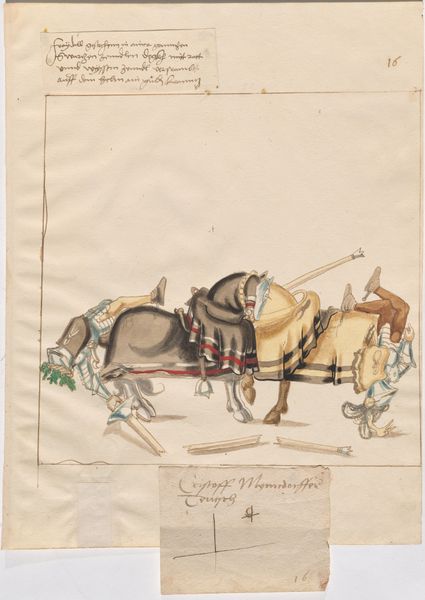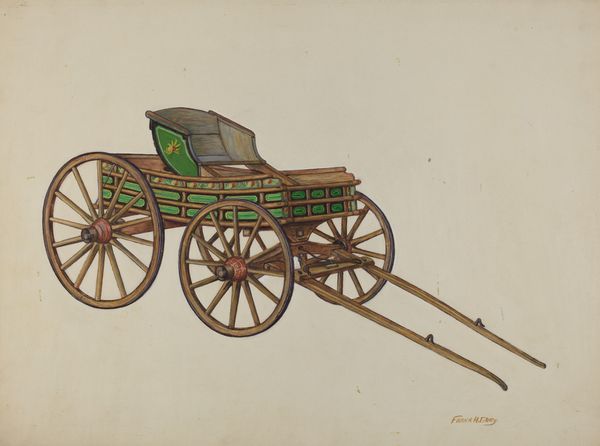
Portfolio Cover for a Collection of Caricatures and Satires 1840 - 1850
0:00
0:00
drawing, print, watercolor
#
drawing
#
water colours
# print
#
caricature
#
landscape
#
watercolor
#
child
#
coloured pencil
#
underpainting
#
romanticism
#
horse
#
men
#
watercolour illustration
#
genre-painting
Dimensions: 12 × 17 1/4 in. (30.5 × 43.8 cm)
Copyright: Public Domain
Curator: This watercolor and ink drawing, entitled "Portfolio Cover for a Collection of Caricatures and Satires," was created sometime between 1840 and 1850. Editor: It's charming, but immediately I get a sense of social hierarchy, a rigidness conveyed through the slightly awkward figures and composition. Curator: Absolutely. The scene depicts a horse-drawn carriage carrying a driver and several passengers. Its original function as a portfolio cover provides an interesting frame. We see visual evidence of Romanticism's embrace of landscape even when depicting a scene firmly rooted in genre. But what kind of genre scene do we have here? Editor: One where class distinctions are clearly visualized. Consider how the coachman occupies one visual plane entirely separate from that of his passengers. Note too how indistinct the figures inside the coach are – the passengers are of no individual consequence; together, they merely embody 'polite' society. There is an undeniable critique there. Curator: Good point. This was a period of intense social and political upheaval. Satire served as a potent tool for challenging power structures. Do you think this work functions successfully as a piece of social commentary? Editor: In its own way, yes. It is gentle satire, and one that functions best when considered within its proper socio-economic framework, namely, the emergence of industrial capitalism and anxieties over inherited wealth. The coach itself is quite dilapidated for the type of passengers riding inside it! Curator: Right, it draws attention to those visible markers of class. It is a reminder of how these works were consumed and circulated within specific social circles, acting as a mirror, perhaps even a goad, to the audiences of the time. Editor: Looking closely at the edges, at the pattern on the binding and its method of stitching, gives me an even deeper appreciation for its original purpose – and for the radical ideas, and images, this ‘cover’ contained. Curator: It definitely provides another layer to consider; an intimate view of art's place in shaping public and private discourse.
Comments
No comments
Be the first to comment and join the conversation on the ultimate creative platform.
